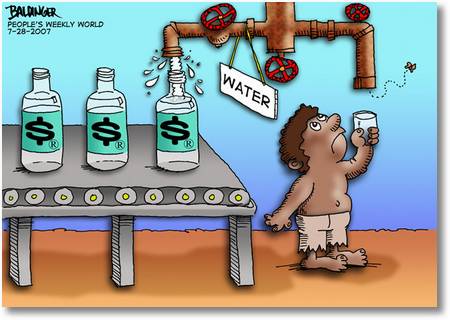It has been a busy term maintaining two blogs. However, I have thoroughly enjoyed blogging about ecosystem services in Africa. I hope you enjoyed reading it as well!
Ecosystem services in Africa
There is no doubt that freshwater ecosystem services contributes significantly to the livelihoods of millions of African citizens. Prior to this blog, I have had little understanding of the ecosystem services concept and negligible understanding of its importance in the African continent. After consulting numerous news articles, scientific publications and reports, I have come to understand that the ecosystem services concept is hotly debated with criticism geared towards the infiltration of economic logic in environmental conservation. I fully recognize the flaws of the concept if employed solely with economic analyses and valuation. I also recognize the inherent trade-offs present in actual resource management which are too often forgotten or not considered. If not consulted properly, would lead detrimental effects to ecosystem services and livelihoods as discussed in the fisheries industry at Lake Victoria. However, with all the flaws of applying economic logic to conservation, I do believe that the ES concept can be a valuable tool in aiding scenario planning and induce conservation efforts. On the African continent, case studies consulted all seemed to indicate that application of the ES principles through hydrological modelling, economic valuation and payment for services scheme did lead to positive effects. Although inherent trade-offs persists, proper use of the ES concept in the African continent was generally advantageous.
Throughout this blog, I have examined the facets of the ecosystem services concept through individual components. I looked at individual changes to the provision of and access to ecosystem services under the influence climate change, dam building and development schemes. I would like to emphasize that in reality, these are not independent components. Instead, they are interconnected and interdependent stressors to the ecosystem which as a whole presents a challenge to the integrity and sustainable management of an entire suite of ecosystem services. In a comprehensive study examining threats to ecosystem services in South Africa, Jackson et.al. 2016 identifies that freshwater ecosystems in South Africa are often under threat from multiple stressors which interacts with each other and promotes new stressors (Fig.1). Interactions between stressors are made more prominent under inherent trade-offs where promotion of a certain ES at the expense of another may disproportionately to the degradation of additional ecosystem functions. The authors rightly cited the Working for Water programme as a successful example of tackling interacting stressors (invasive species and water quality+supply).
 |
| (Source) |
Integrating ES into IWRM
After looking critically at the ecosystem services in Africa, I wish to position the concept within the wider realm of water resources management. Many of the principles of the ES concept exists in African water policy in the form of Integrated Water Resources Management (IWRM). The rise of IWRM represented a shift in water management paradigm to integrated, multi-purpose basin management. Both concepts attempts to manage water resources in a way such that ecosystem integrity, human well-being and socio-economic interests are maximized. IWRM has been subjected to considerable criticism over its ill-defined/vague definition, difficulty in implementation and governance and intangible evidence of success (Cook and Spray 2010). IWRM started with an aim to consider primarily social well-being while the ES framework puts ecosystem integrity as its central aim. Aspects such as ecosystem functioning and biodiversity response are not easily quantifiable and are thus intangible and often less considered against economic development under IWRM. A general lack of scientific principle was also cited as a major criticism where the multi-level, multi-scale interconnectedness of ecosystem functions may be better assessed with a complex framework (Jewitt 2011). With a more rigorous, universal definition by the MA in 2005, the ES framework may contribute positively to IWRM in which long-term ecosystem health is better considered.
Nevertheless, the basic principle behind both frameworks remains unchanged. Holistic and integrative approaches are needed to address trade-offs underpinning environmental sustainability, human consumption and economic growth, fully highlighting the valuable contributions from geography and other interdisciplinary subjects.
Nevertheless, the basic principle behind both frameworks remains unchanged. Holistic and integrative approaches are needed to address trade-offs underpinning environmental sustainability, human consumption and economic growth, fully highlighting the valuable contributions from geography and other interdisciplinary subjects.
Thank you for reading!





